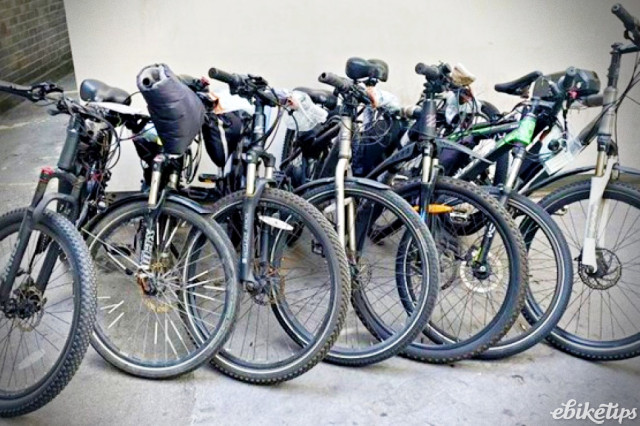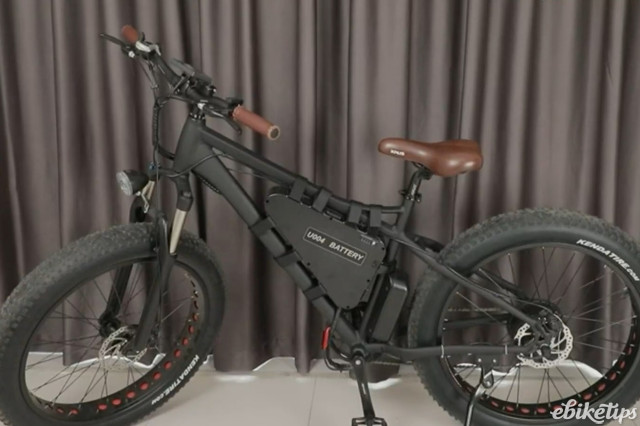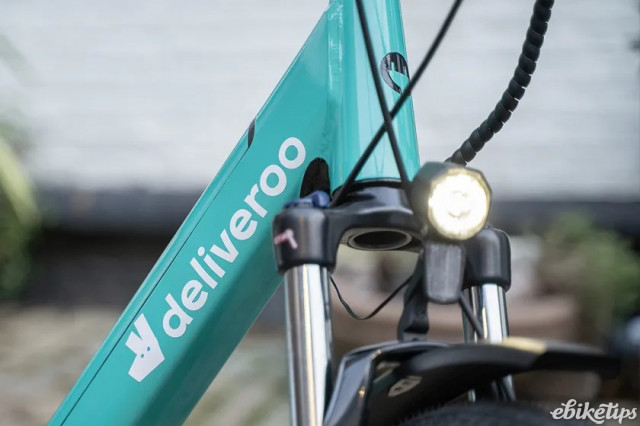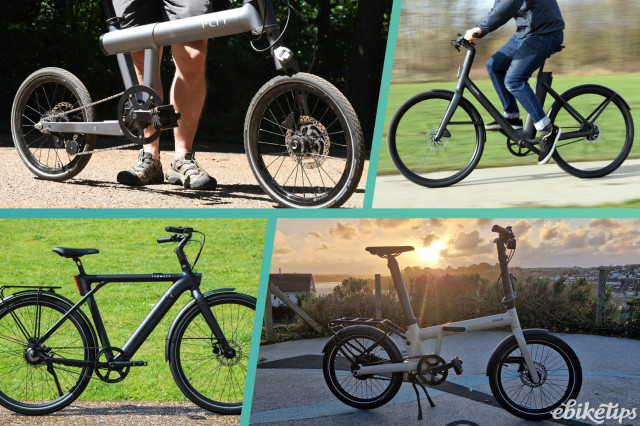The “vast majority" of e-bikes seized by the City of London Police are being used by workers employed to deliver food, according to Sergeant Stuart Ford, who leads the force’s cycle response unit – “especially those that are being adapted.”
Recent figures from 27 police forces provided to the Press Association show there has been a steep rise in the number of e-bike seizures. Last month we reported how the City of London's cycle team has been seizing almost one illegal e-bike or e-scooter a day.
While e-bikes that qualify as electrically assisted pedal cycles (EAPCs) do not need to be registered, taxed or insured, and riders do not need a licence to ride one, some are illegally modified to exceed speed and/or power regulations.
These bikes will often feature a motor that can provide more than 250W ‘continuous rated power’ and may also have a throttle that means the rider doesn’t need to pedal to trigger the power assistance.
Speaking to Radio 4’s Today programme, Ford explained: “They’re buying a normal bike and then they’ll buy a kit online of batteries – which are often unstable in a lot of cases – throttles, rear hub wheel motors that will turn them into mopeds, basically.”
> When does an e-bike officially become a moped?
Are e-bike conversions illegal?
It’s worth emphasising at this point that e-bike conversion kits are not fundamentally illegal – only those that modify the bike to exceed those EAPC regulations mentioned above.
As safety charity Electrical Safety First (ESF) has pointed out: "Many conversion kits that are available from less scrupulous dealers are more powerful. They push a DIY-built e-bike beyond the legal safeguards of EAPC rules and leave the user and pedestrians vulnerable to serious injury, and the former liable to prosecution."
As part of its ongoing e-bike safety campaign, ESF has highlighted the delivery industry as a particular area of concern.
Most delivery riders are employed as independent contractors and paid by the number of jobs they do, rather than operating as employees. This puts the onus on them to source their own e-bikes at their own cost.
“As conversion kits sold online can be a fraction of the cost of a ready-built e-bike, they are more likely to appeal to those with less disposable income,” reasons ESF.
Its recommendation is that delivery services should take responsibility and liability for the e-bikes operated by their riders.
What are delivery apps actually doing?
Speaking to the BBC about e-bike seizures from delivery riders, food delivery service Deliveroo said only that it would not work with any riders caught using illegally modified e-bikes.
We do however note that what had previously been a guide to converting your own e-bike page on its website has now become an “E-bike 101” page, so it seems DIY conversions are at least no longer being encouraged.
This page outlines what qualifies as an EAPC and on the subject of conversions, advises: “If you're considering converting your existing bicycle to an e-bike, Deliveroo highly recommends using a reputable provider who can ensure that the bike is converted safely and legally.”
Elsewhere on the page, would-be riders can find a link to a rider discount page where they can currently get 10% off the cost of a Zoomo e-bike subscription.
Zoomo also offers discounts to riders who deliver with Uber Eats, while Just Eat offers discounts on the purchase price of an Eskuta e-bike.
Whether these gestures are enough when cheaper, often illegal options can easily be found online is another matter. ESF would ideally like to see the delivery app firms go further and actually provide e-bikes to their riders themselves.
We have seen that other measures are possible too. In New York, Uber and Zoomo have run e-bike trade-in schemes in response to battery fires.
Online marketplaces
A sense of reluctance to take responsibility wasn’t dispelled by the somewhat underwhelming news last month that Amazon and Deliveroo had "recognised the part they can play" when it comes to e-bike safety, according to London Fire Brigade.
This apparently amounted to a series of ‘Deliveroo Rider Roadshows’ where firefighters could speak to riders directly to, “educate them on how they can use their e-bike safely, particularly in the home.”
Amazon’s actions meanwhile amount to sending ‘post-purchase product alerts’ to anyone who buys an e-bike, e-scooter or a related accessory, such as a battery pack, conversion kit or charger. This will amount to “easy-to-understand tips on how to use and store them safely”.
Amazon reportedly requires businesses selling e-bikes, e-scooters and accessories through its website to, “provide documented testing carried out by an accredited laboratory in addition to requiring compliance with applicable laws and regulations.”
Potentially dangerous e-bike chargers have however repeatedly been found on sale on the site. In January this year the Office for Product Safety and Standards (OPSS) issued a withdrawal notice to Amazon (as well as AliBaba, eBay and Made in China) requiring it to stop selling a UPP e-bike battery because it had been linked to a number of fires across England.
While there is a dedicated safety standard for e-bikes, allowing manufacturers to demonstrate their product meets legal safety requirements, there is currently no such equivalent for e-bike conversion kits and ESF is calling for this to be addressed.
It says that many e-bike conversion kits available online don’t include a battery, meaning sourcing one is left to the consumer. An incompatibility between battery and charger is frequently cited as being one of the most significant fire risks.
Take a look at our guide for a closer look at what makes some e-bikes batteries and chargers a fire risk.










